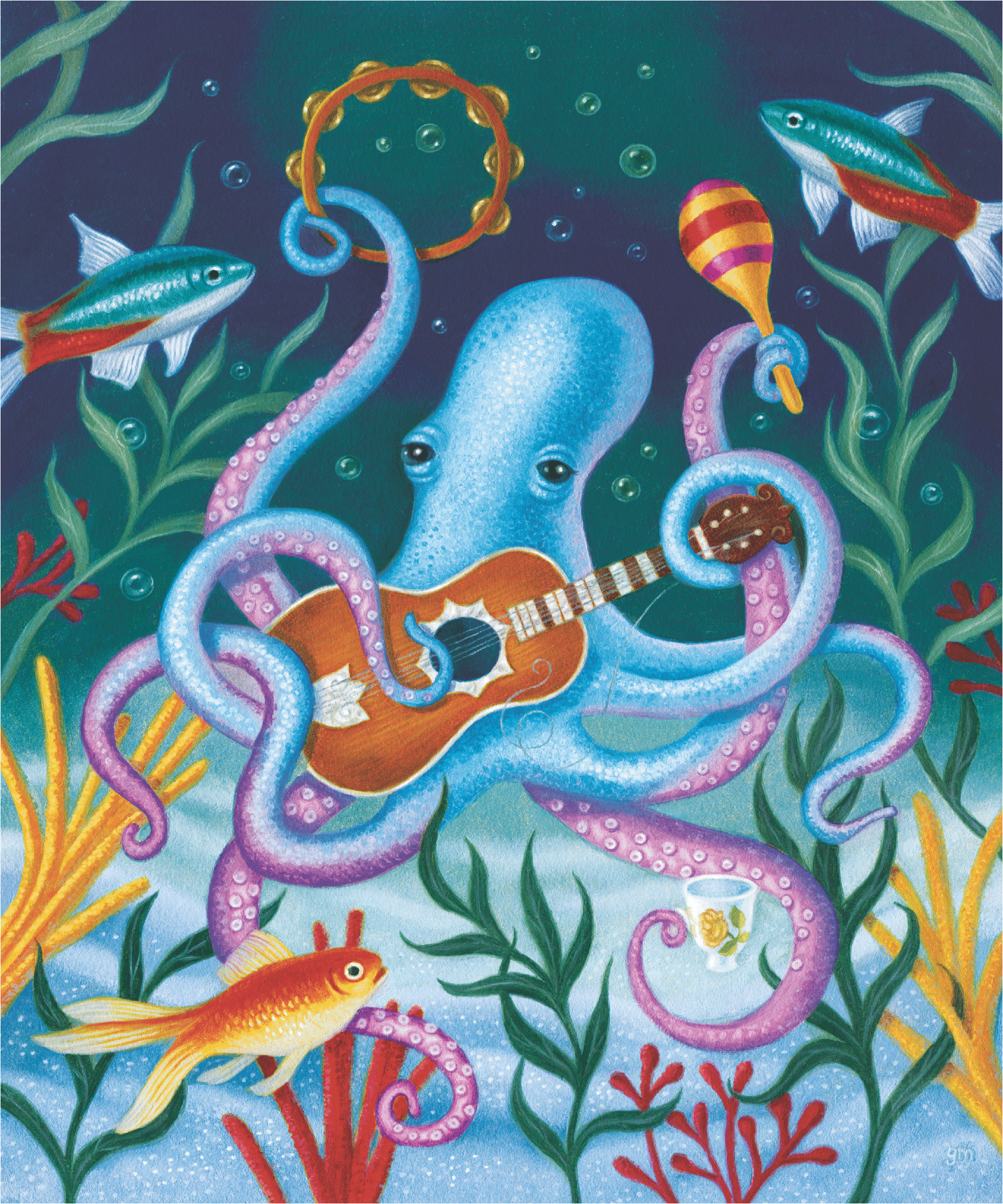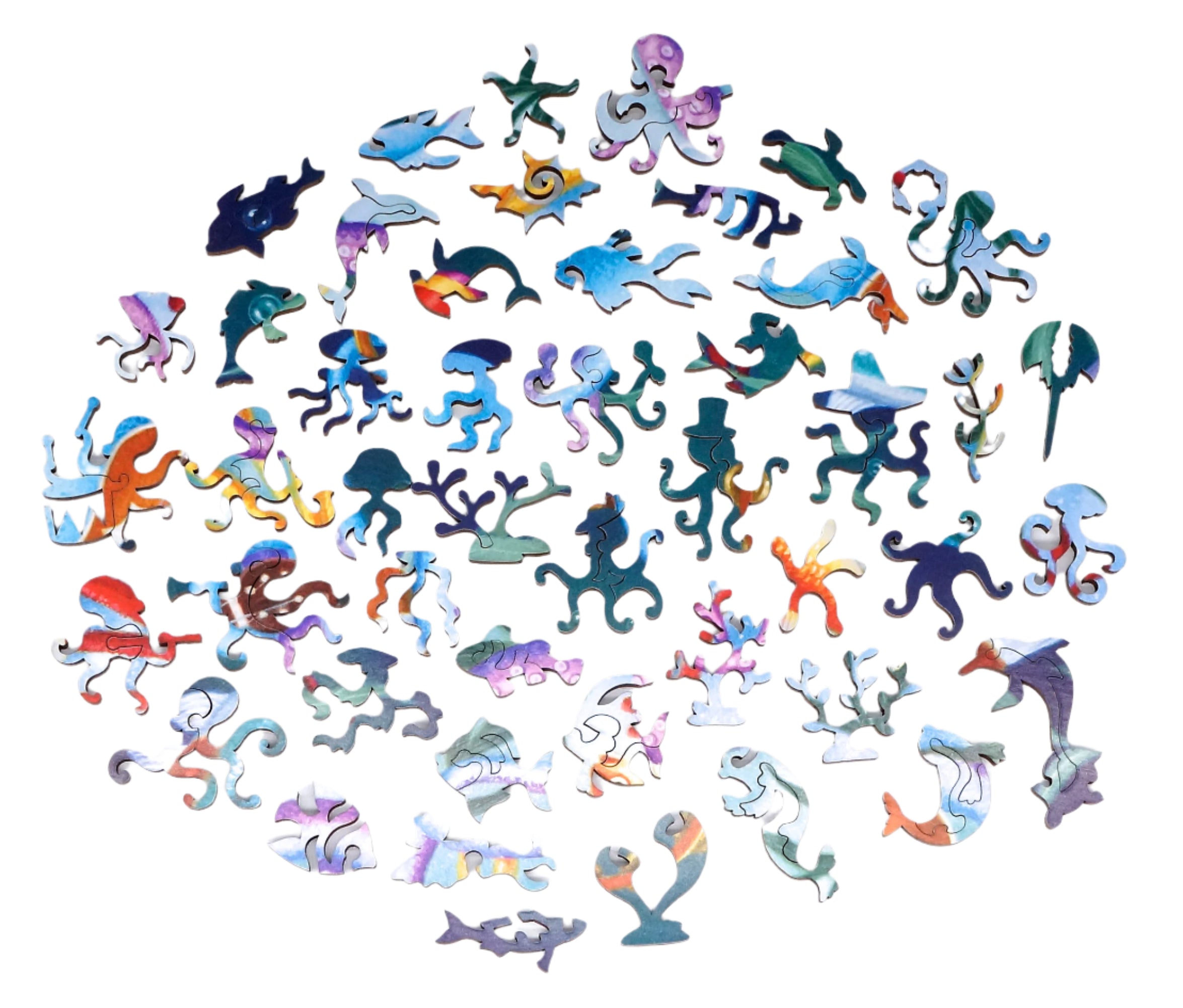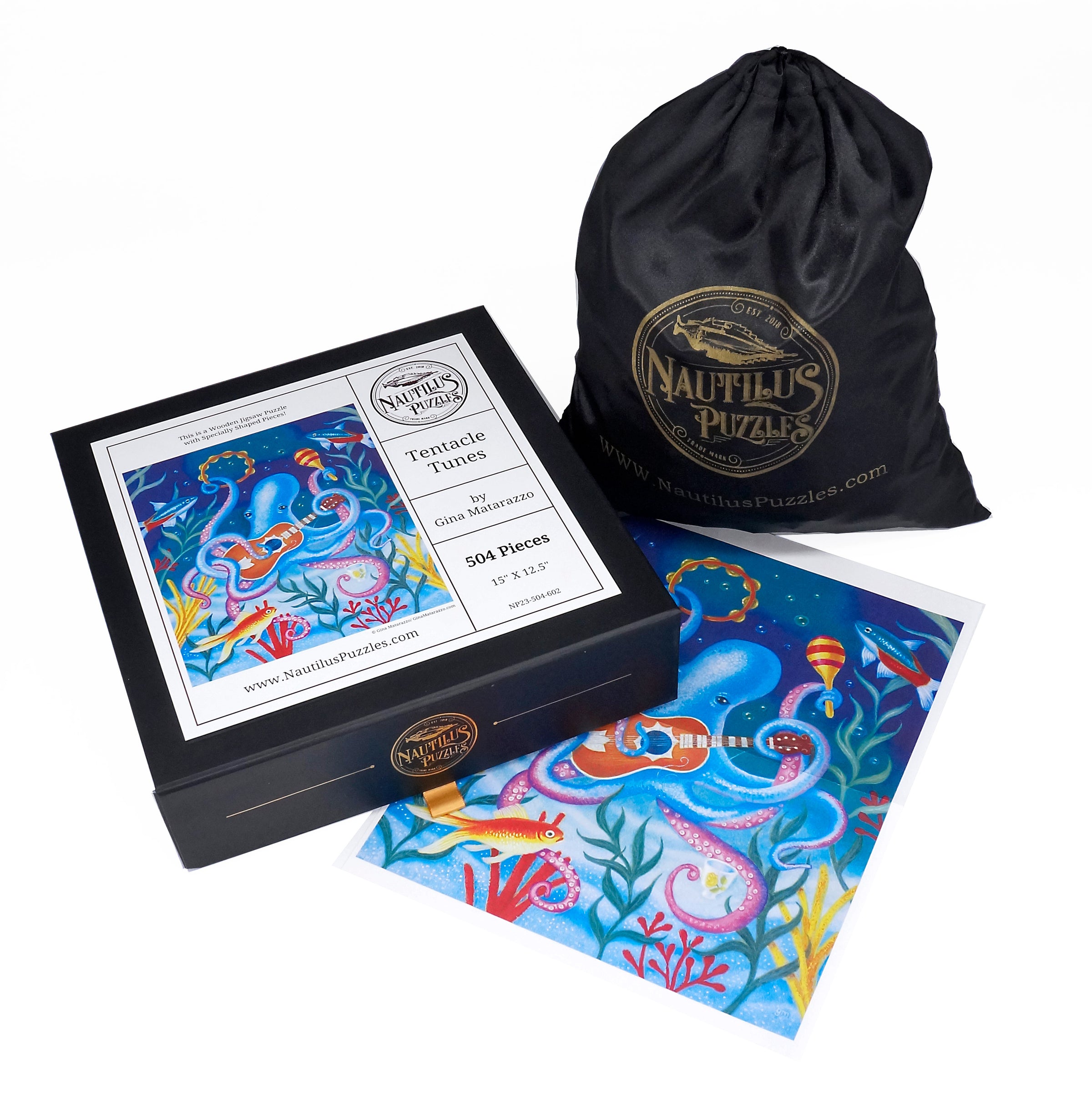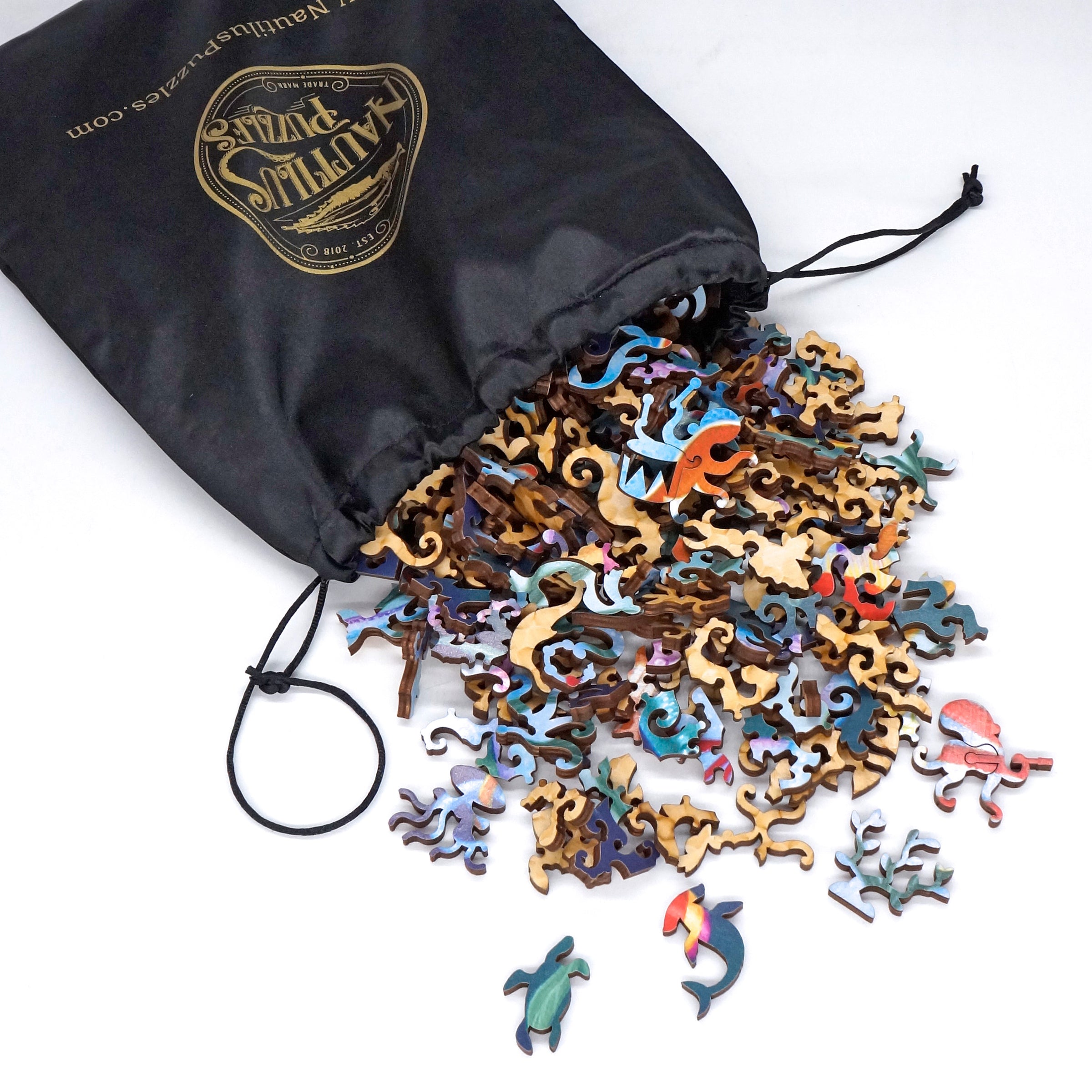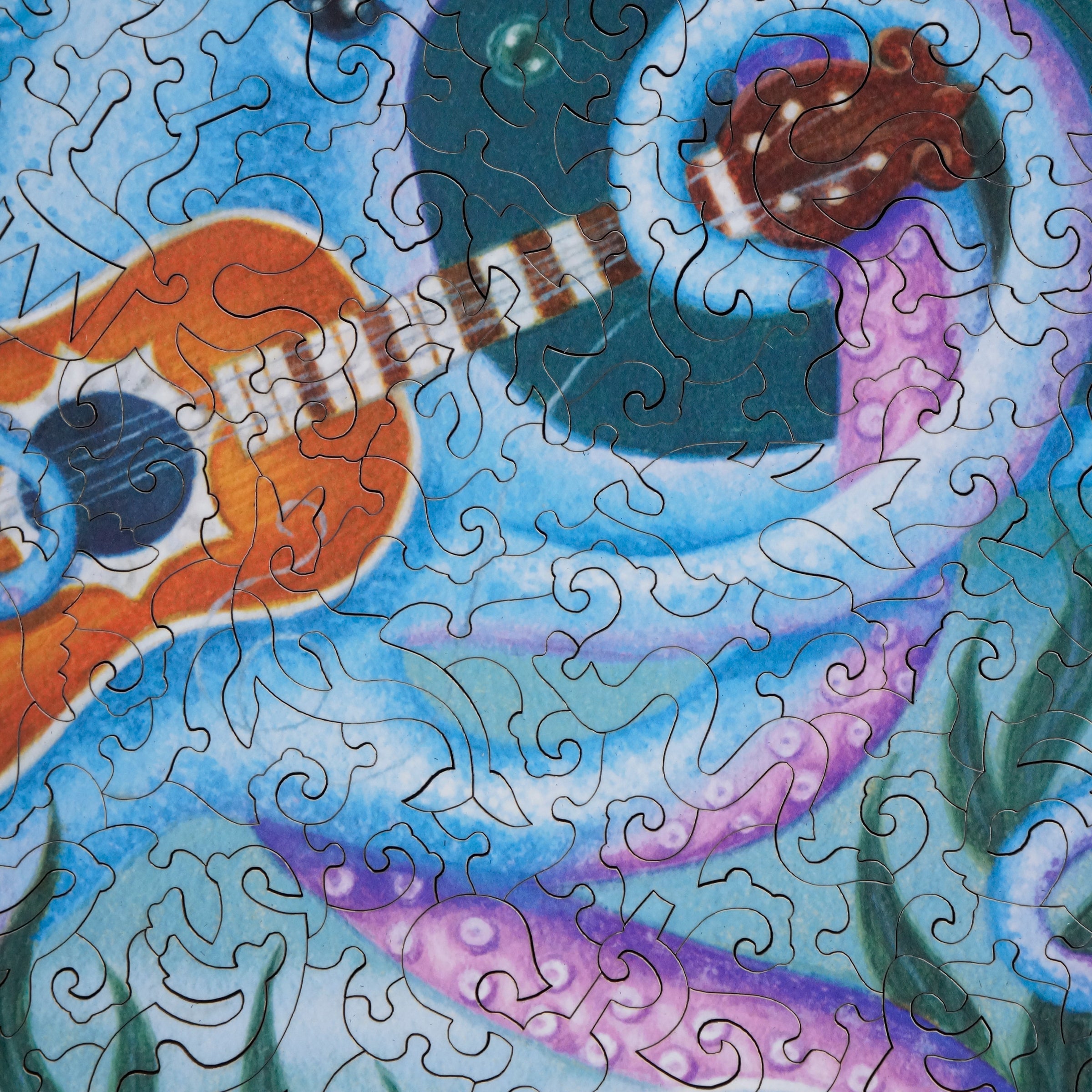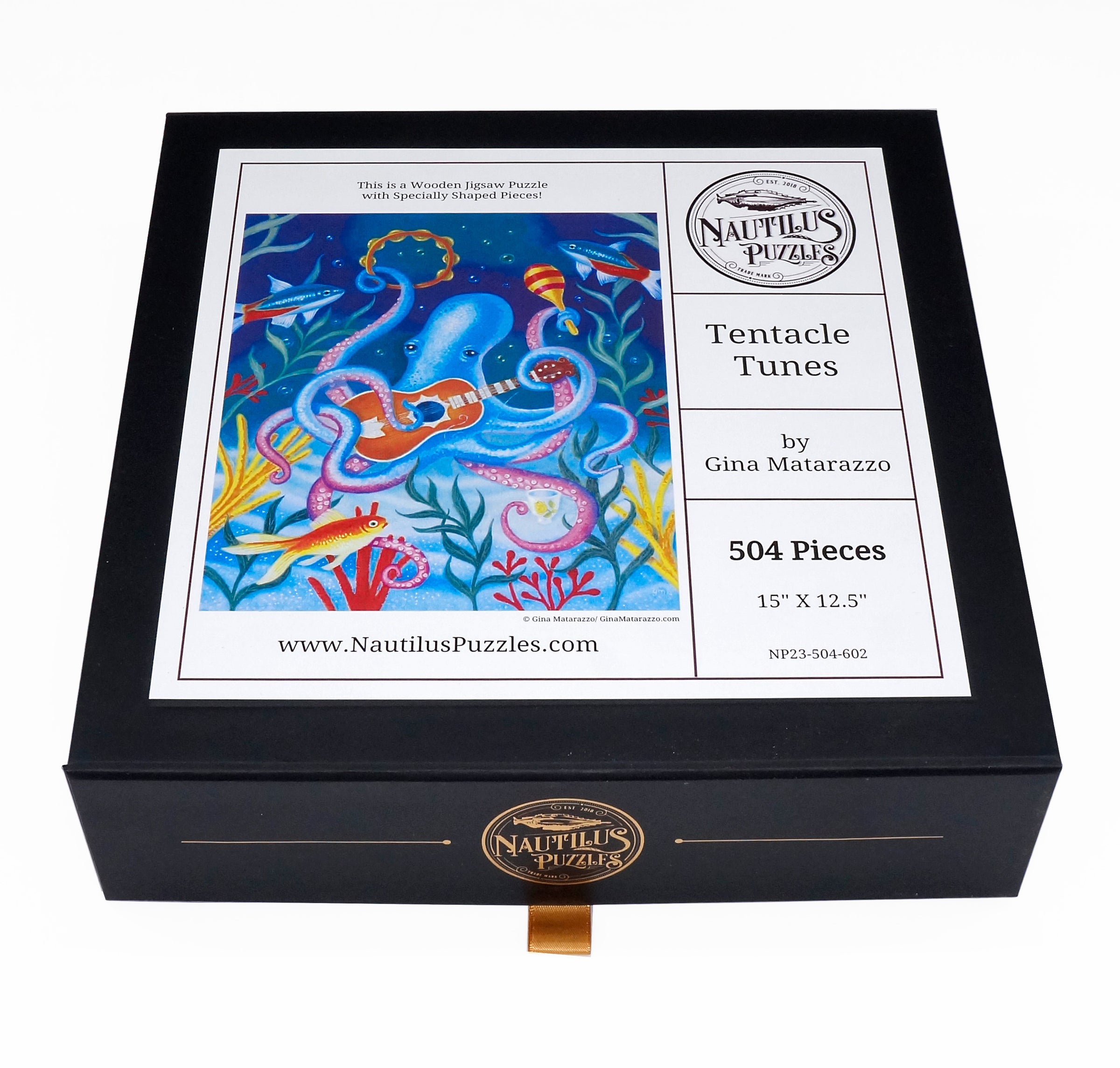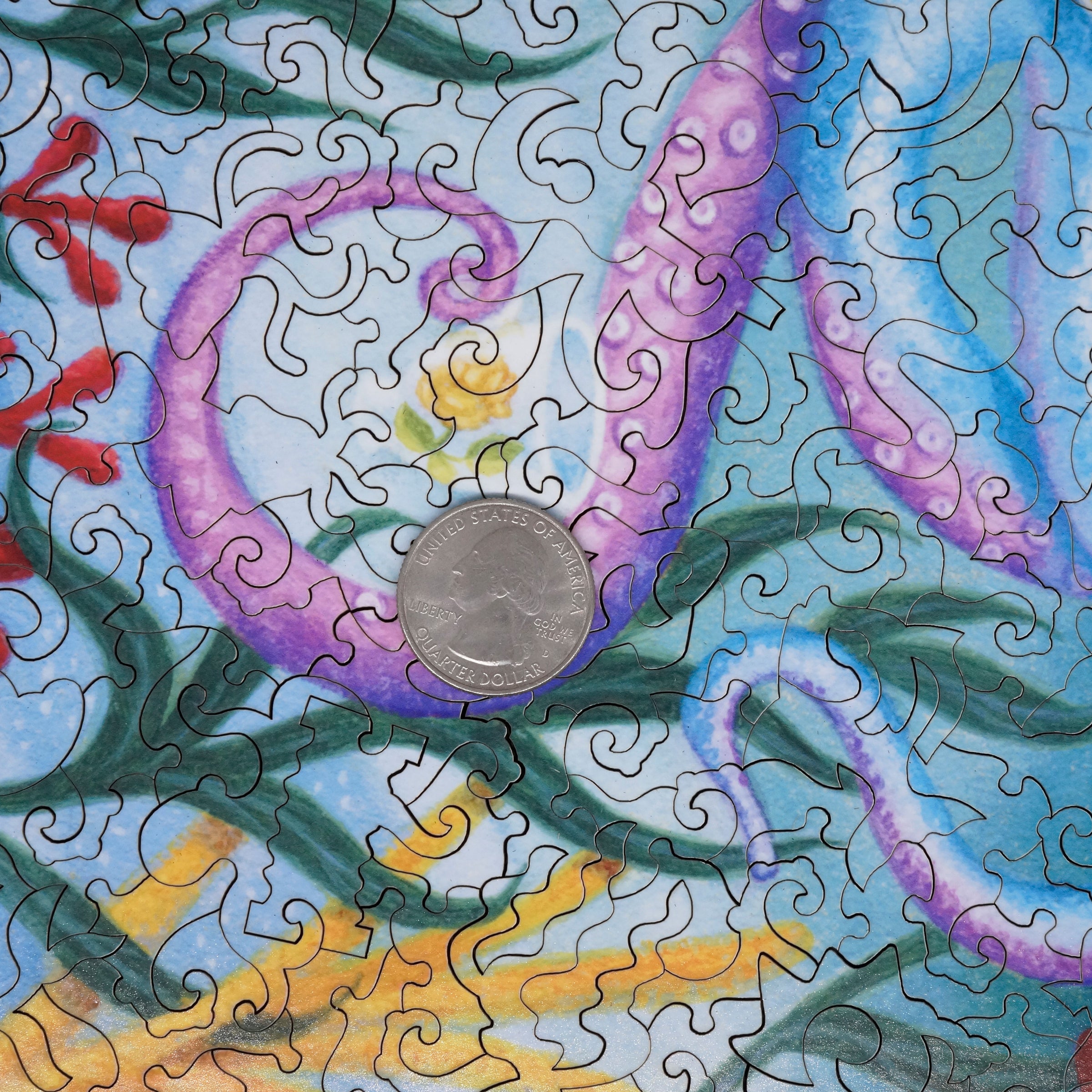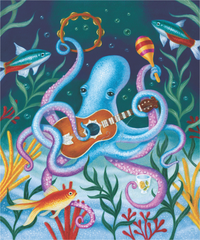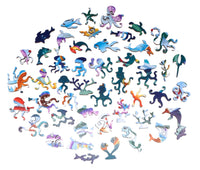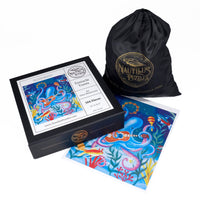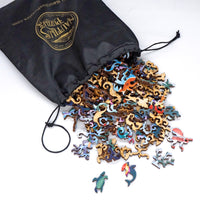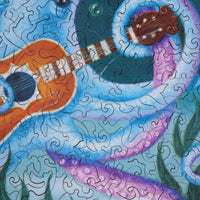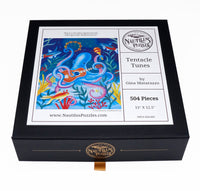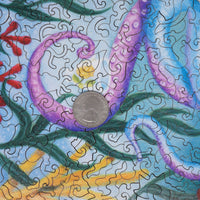Tentacle Tunes (504 Piece Wooden Jigsaw Puzzle)
- Regular Price
- Sale Price
- $119.95
- Regular Price
- $119.95
- Unit Price
- per
- Every puzzle invites you to discover uniquely handcrafted whimsy (shaped) pieces, thoughtfully designed to complement the image theme.
- Irregular pieces provide an engaging challenge, keeping puzzlers intrigued with interesting shapes and rewarding problem-solving.
- To ensure exceptional durability, each puzzle is crafted from premium 4mm FSC-certified Finnish birch plywood.
- Nautilus Puzzles are thoughtfully designed and meticulously crafted in the USA, on California's sunny central coast.
- The puzzles are precision laser cut with advanced technology, ensuring every piece fits together perfectly for a smooth and enjoyable experience.
Octopuses have long captured the imagination of ocean lovers, and it's easy to see why. They have a unique appearance and move through the water alienly. In addition, they produce clouds of smoky ink to defend themselves.
Unsurprisingly, they've inspired stories for years, giving rise to myths such as the Kraken and Ursula in The Little Mermaid.
The oldest known octopus fossil belongs to an animal that lived some 296 million years ago, during the Carboniferous period. That specimen belongs to a species named Pohlsepia and is on display at the Field Museum in Chicago.
The word októpus in Greek translates to "eight-foot," and scientists have long thought that all octopus limbs performed similar functions. However, research has shown that some octopuses use two limbs for walking.
These rear limbs allow octopuses to walk across the ocean floor, similar to how humans walk on land. This leaves the remaining limbs free to form a variety of shapes. These shapes can include impersonating floating algae or coconut shells, which may protect the Octopus from predators.
Their unique nervous system allows them to perform multiple tasks simultaneously. Around one-third of their nerve cells are in their central brain, while an astounding two-thirds are in their limbs. In addition, each limb has its own nerve cell collection that enables it to move without input from the central brain.
These flexible, highly specialized limbs enable octopuses to perform unique tasks. Like chimpanzees, dolphins, and crows, octopuses are among the unique intelligent animals observed using tools.
To survive in the deep ocean, octopuses evolved a copper rather than iron-based blood called Hemocyanin, which turns their blood blue. This copper base is more efficient at transporting oxygen than hemoglobin when the water temperature is very low and little oxygen is around.
Hemocyanin doesn't transport oxygen as well as hemoglobin, so octopuses need three hearts to deliver enough oxygen around the body. Two pump blood to their gills, and a third heart keeps circulation flowing to the organs. Unfortunately, this third heart stops every time the Octopus swims, which may explain why they prefer to crawl.
- Includes Bonus Poster to Guide Assembly
- Number of Wooden Jigsaw Puzzle Pieces: 504
- Completed Wooden Jigsaw Puzzle Size: 15" X 12.5"
- Artist: © Gina Matarazzo
- Serial #: NPL23-504-602D
- Wood Thickness: 4mm
- Design Cut Style: Victorian
- Difficulty: Level 3
- Made in the USA
- Wooden Jigsaw Puzzle
- Serial #: NPL23-504-602D
- Includes a Bonus Poster to Guide Assembly
- Made in the USA
- Number of Puzzle Pieces: 504
- Completed Puzzle Size: NPL23-504-602D
- Design Cut Style: Victorian
- Difficulty: Level 3
If you order before 2:00 p.m. Pacific, your order will be shipped that day. Orders after 2:00 p.m. are shipped the next business day (M—F).
Delivery charges are calculated at checkout based on the weight/volume of your shipment and the shipping address.
USA Free Shipping: Offered on orders over $75 in value. Typically takes 8 - 10 Business Days, and the last mile is delivered by USPS. Please choose a paid shipping method if you cannot receive USPS delivery or if you are shipping to Alaska, Hawaii, U.S. protectorates, APOs, FPOs, or P.O. Boxes.
USPS Ground Advantage: 6 - 8 Business Days
UPS Groundsaver/Surepost: 7 - 9 Business Days
USPS Priority Mail: 2 - 4 Business Days
USPS Priority Mail Express: 1 - 3 Business Days
UPS 2nd Day Air: 2 Business Days. No Saturday Delivery
UPS Next Day Air: 1 Business Day. No Saturday Delivery
For your peace of mind, all orders are sent using a tracked courier service. Once your order has been picked up, you will receive an email with the tracking details, allowing you to monitor your shipment's progress.
Orders outside the U.S. are not eligible for Free Shipping. Please choose your paid shipping method during checkout. We offer DHL, UPS, and USPS Priority Mail for international shipments.
Customs and Import Duties: If your puzzles are being delivered outside the USA, your order may be subject to import fees. These are stipulated by each individual country and are not collected or remitted by Nautilus Puzzles. Unfortunately, as we cannot advise you on the amount of these fees, we recommend contacting your country’s customs office or tax agent for the respective rates.
Returns - Peace of Mind Guaranteed: If you are less than delighted with your new puzzle, you can return it to us within 30 days of receiving your order for a full refund or store credit. We ask that it be unused and in its original condition and packaging (shrink-wrap not removed).
If you contact us in advance, we can email you a prepaid shipping label that you can print and affix to your return. To request this label, simply provide your order number and reason for return to our customer service team at help@nautiluspuzzles.com. Shipping costs will be deducted from your refund/credit, but they are charged at our volume discount shipping rates rather than the standard retail rate.
Please note we can only accept custom puzzles for return or refund if there are quality issues, as these items have been produced specifically for you.
